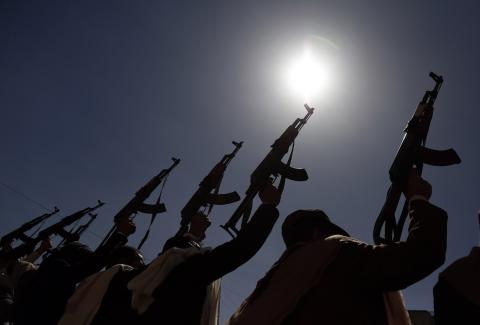Have you heard of the latest trend in New York City? If you’re in Manhattan, it’s the mysterious Frog Club, an establishment so exclusive that one can only gain access by sending a message to an anonymous email address and hoping, eventually, for an answer.
Over in Brooklyn, foodies are vying for a coveted spot at Lilia, a restaurant that consistently tops lists of the city's best eateries.
But step into Turtle Bay, home of the United Nations Headquarters, and you'll hear whispers about the SOTF — not a typo, but the acronym for the Summit of the Future. This acronym is the latest addition to the UN lexicon, with everybody in Turtle Bay talking about the Summit that will take place in September at the UN General Assembly – or UNGA.
The UN, like many organisations, uses acronyms to make its work faster and more efficient. Unlike most workplaces, though, the number of acronyms is so immense that learning them can be a job in itself. The UN’s shorthand expressions, seemingly innocuous at first glance, wield significant power in international diplomacy. Using the convoluted clusters of letters can make or break a person’s credibility and affect their ability to make meaningful contributions in meetings.
While these acronyms undoubtedly aid brevity, their sheer volume can overwhelm and obscure understanding, particularly for external stakeholders and the public. The hurdle is real for newcomers at the UN. From agencies and committees to diplomatic missions and agreements, nearly every facet of UN activity is encapsulated in an alphabet soup of condensed terminology. An official UN list counts about 80 of them, but there are many more, and the list constantly expands.
Even the UN Secretary-General’s spokesperson, Stéphanie Dujarric, acknowledged that the organisation “has an acronym” for almost every one of its committees and mandates. Joking with a French reporter, Dujarric said that “between you and me, entre toi et moi, and the acronyms, I have a hard time enough keeping up with acronyms in English.”
If UNSC — UN Security Council — and UNGA are easily recognisable, some acronyms are more technical and require an expert level of UN following. How about UNFCCC — United Nations Framework Convention on Climate Change — or maybe the BBNJ — the Agreement on the Conservation and Sustainable Use of Marine Biological Diversity of Areas beyond National Jurisdiction? Some UN missions provide a list of acronyms to staff to help interns or new employees follow discussion in meetings, but the learning curve can be steep — with the elusive aim of memorising all the UN acronyms.
Proponents of UN acronyms argue their indispensable role in facilitating concise communication in meetings in which time is often tight, sometimes limited to a few seconds per intervention.
Conversely, critics contend that over-reliance on acronyms poses significant challenges to transparency and inclusivity. For newcomers, especially visiting journalists or civil society organisations seeking to engage with the UN, deciphering specialised jargon can prove daunting, if not prohibitive.
The pervasive use of acronyms at the UN has broader implications for communication and accountability within the organisation. As these shorthand expressions proliferate, there is a tendency for discussions to become insular, catering primarily to those well-versed in UN lingo. To help its readers make sense of it all, the Associated Press even produced a list of essential acronyms for observers hoping to follow UN General Assembly meetings last year.
In the labyrinthine corridors of the UN, discussions using acronyms are plentiful, but discussions about how prominent and confusing they can be are also recurring topics. Meanwhile, management at the UN tries to keep its staff focused on SMART — goals that are Specific, Measurable, Achievable, Realistic and Time-bound.
Now, if you thought the aforementioned acronyms were overwhelming, consider for a moment the many people at the UN working in more than one language, which requires a set of acronyms all of its own.

